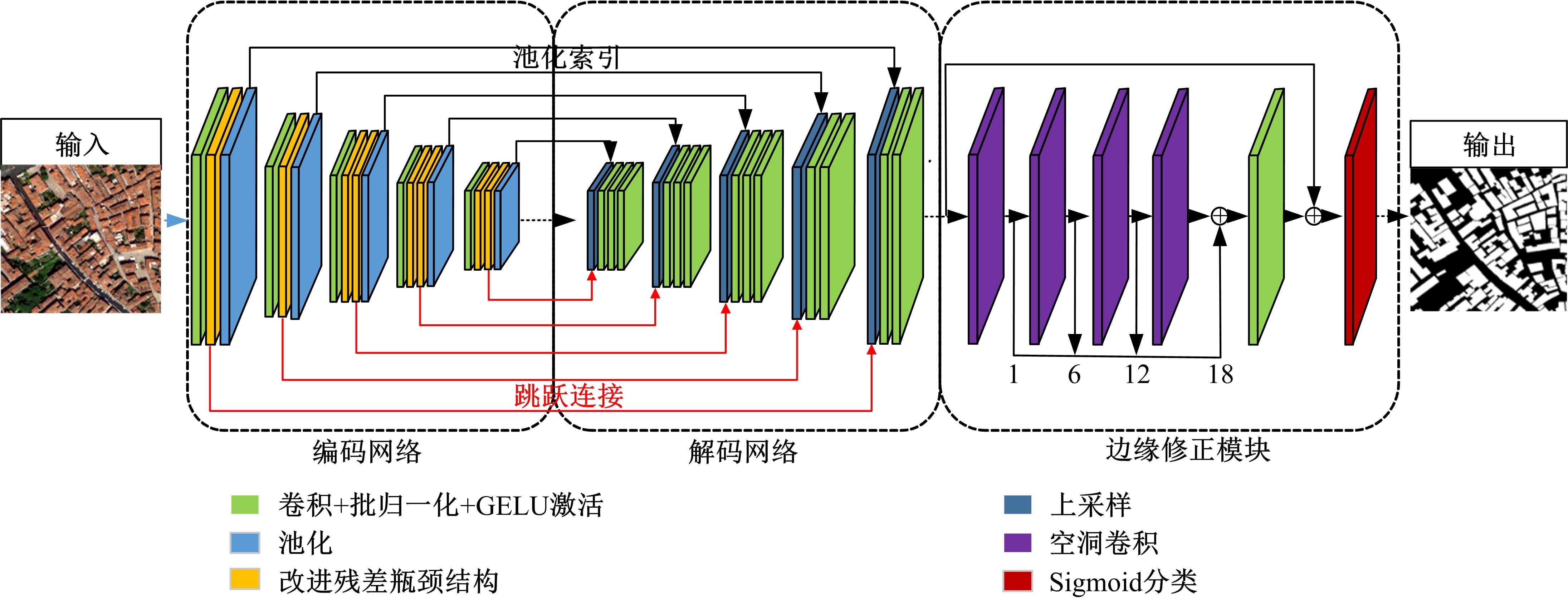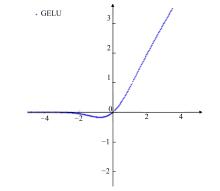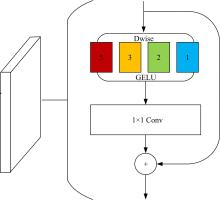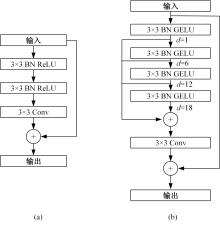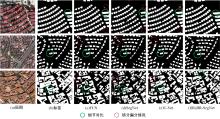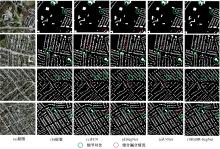Journal of Jilin University(Engineering and Technology Edition) ›› 2023, Vol. 53 ›› Issue (1): 248-254.doi: 10.13229/j.cnki.jdxbgxb20211389
Building segmentation method of remote sensing image based on improved SegNet
Bing ZHU1( ),Zi-wei LI2,Qi LI1,3(
),Zi-wei LI2,Qi LI1,3( )
)
- 1.College of Computer Science and Technology,Changchun University of Science and Technology,Changchun 130022,China
2.College of Computer,Jilin Normal University,Siping 136000,China
3.Zhongshan Institute,Changchun University of Science and Technology,Zhongshan 528437,China
CLC Number:
- TP389.1
| 1 | 余帅, 汪西莉. 含多级通道注意力机制的CGAN遥感图像建筑物分割[J]. 中国图象图形学报, 2021, 26(3): 686-699. |
| Yu Shuai, Wang Xi-li. Remote sensing building segmentation by CGAN with multilevel channel attention mechanism[J]. Journal of Image and Graphics, 2021, 26(3): 686-699. | |
| 2 | 齐滨, 赵春晖, 王玉磊. 基于支持向量机与相关向量机的高光谱图像分类[J]. 吉林大学学报: 工学版, 2013, 43(S1): 143-147. |
| Qi Bin, Zhao Chun-hui, Wang Yu-lei. Hyperspectral imagery classification based on SVM and RVM[J]. Journal of Jilin University(Engineering and Technology Edition), 2013, 43(S1): 143-147. | |
| 3 | Long J, Shelhamer E, Darrell T. Fully convolutional networks for semantic segmentation[J]. IEEE Transactions on Pattern Analysis and Machine Intelligence, 2015, 39(4): 640-651. |
| 4 | Ronneberger O, Fischer P, Brox T. U-Net: convolutional networks for biomedical image segmentation[C]∥International Conference on Medical image computing and computer-assisted intervention. Cham: Springer International Publishing, 2015: 234-241. |
| 5 | Badrinarayanan V, Kendall A, Cipolla R. SegNet: A Deep Convolutional Encoder-Decoder Architecture for Scene Segmentation[J]. IEEE Transactions on Pattern Analysis & Machine Intelligence, 2017, 39(12): 2481-2495. |
| 6 | 何青, 孟洋洋, 李华智. 多层次编码—解码网络遥感图像建筑物分割[J]. 计算机应用研究, 2021, 38(8): 2510-2514. |
| He Qing, Meng Yang-yang, Li Hua-zhi. Multi-level encoding and decoding network remote sensing image building segmentation[J]. Application Research of Computers, 2021, 38(8): 2510-2514. | |
| 7 | 李传林, 黄风华, 胡威, 等. 基于Res_AttentionUnet的高分辨率遥感影像建筑物提取方法[J]. 地球信息科学学报, 2021, 23(12): 2232-2243. |
| Li Chuan-lin, Huang Feng-hua, Hu Wei, et al. Building extraction from high-resolution remote sensing image based on Res_AttentionUnet[J]. Journal of Geo-information Science, 2021, 23(12): 2232-2243. | |
| 8 | 杨潇宇, 汪西莉. 结合多尺度注意力和边缘监督的遥感图像建筑物分割模型[J]. 激光与光电子学进展, 2022, 59(22): 335-344. |
| Yang Xiao-yu, Wang Xi-li. Building segmentation model of remote sensing image combining multi-scale attention and edge supervision[J]. Laser & Optoelectronics Progress, 2022, 59(22): 335-344. | |
| 9 | 王舒洋, 慕晓冬, 杨东方, 等. 融合高阶信息的遥感影像建筑物自动提取[J]. 光学精密工程, 2019, 27(11): 2474-2483. |
| Wang Shu-yang, Mu Xiao-dong, Yang Dong-fang, et al. High-order statistics integration method for automatic building extraction of remote sensing images[J]. Optics and Precision Engineering, 2019, 27(11): 2474-2483. | |
| 10 | Abdollahi A, Pradhan B, Alamri A M. An ensemble architecture of deep convolutional segnet and unet networks for building semantic segmentation from high-resolution aerial images[J]. Geocarto International, 2020, (3): 1-16. |
| 11 | Liu Y, Gross L, Li Z, et al. Automatic building extraction on high-resolution remote sensing imagery using deep convolutional encoder-decoder with spatial pyramid pooling[J]. IEEE Access, 2019, 7(1): 128774-128786. |
| 12 | Shunping J, Shiqing W, Meng L. Fully convolutional networks for multisource building extraction from an open aerial and satellite imagery data set[J]. IEEE Transactions on Geoscience and Remote Sensing, 2019, 57(1): 574-586. |
| 13 | Mnih V. Machine Learning for Aerial Image Labeling[D]. Toronto: University of Toronto, 2013. |
| 14 | Hendrycks D, Gimpel K. Gaussian error linear units (gelus)[J/OL]. arXiv preprint arXiv: 1606. 08415, 2016. |
| 15 | He K, Zhang X, Ren S, et al. Deep Residual Learning for Image Recognition[C]∥Proceedings of the IEEE Conference on Computer Vision and Pattern Recognition, Las Vegas, USA, 2016: 770-780. |
| 16 | Sandler M, Howard A, Zhu M, et al. Mobilenetv2: inverted residuals and linear bottlenecks[C]∥Proceedings of the IEEE Conference on Computer Vision and Pattern Recognition, Piscataway, USA, 2018: 4510-4520. |
| 17 | Peng C, Zhang X, Yu G, et al. Large kernel matters-improve semantic segmentation by global convolutional network[C]∥Proceedings of the IEEE Conference on Computer Vision and Pattern Recognition, Hawaii, USA, 2017: 4353-4361. |
| [1] | Shan XUE,Ya-liang ZHANG,Qiong-ying LYU,Guo-hua CAO. Anti⁃unmanned aerial vehicle system object detection algorithm under complex background [J]. Journal of Jilin University(Engineering and Technology Edition), 2023, 53(3): 891-901. |
| [2] | Wei-xuan MA,Yan ZHANG,Chuan-xiang MA,Sa ZHU. Edge detection algorithm of noisy remote sensing image under different illumination conditions [J]. Journal of Jilin University(Engineering and Technology Edition), 2023, 53(1): 241-247. |
| [3] | Jun-jie WANG,Yuan-jun NONG,Li-te ZHANG,Pei-chen ZHAI. Visual relationship detection method based on construction scene [J]. Journal of Jilin University(Engineering and Technology Edition), 2023, 53(1): 226-233. |
| [4] | Gui-he QIN,Jun-feng HUANG,Ming-hui SUN. Text input based on two⁃handed keyboard in virtual environment [J]. Journal of Jilin University(Engineering and Technology Edition), 2022, 52(8): 1881-1888. |
| [5] | Fu-heng QU,Tian-yu DING,Yang LU,Yong YANG,Ya-ting HU. Fast image codeword search algorithm based on neighborhood similarity [J]. Journal of Jilin University(Engineering and Technology Edition), 2022, 52(8): 1865-1871. |
| [6] | Tian BAI,Ming-wei XU,Si-ming LIU,Ji-an ZHANG,Zhe WANG. Dispute focus identification of pleading text based on deep neural network [J]. Journal of Jilin University(Engineering and Technology Edition), 2022, 52(8): 1872-1880. |
| [7] | Ming LIU,Yu-hang YANG,Song-lin ZOU,Zhi-cheng XIAO,Yong-gang ZHANG. Application of enhanced edge detection image algorithm in multi-book recognition [J]. Journal of Jilin University(Engineering and Technology Edition), 2022, 52(4): 891-896. |
| [8] | Shi-min FANG. Multiple source data selective integration algorithm based on frequent pattern tree [J]. Journal of Jilin University(Engineering and Technology Edition), 2022, 52(4): 885-890. |
| [9] | Sheng-sheng WANG,Chen-xu LI,Xiang-yu WANG,Zhi-lin YAO,Yi-shen LIU,Jia-qian WU,Qing-ran YANG. Brain tumor image classification based on improved residual capsule network and sparrow search [J]. Journal of Jilin University(Engineering and Technology Edition), 2022, 52(11): 2653-2661. |
| [10] | Xiang-jiu CHE,He-yuan CHEN. Muti⁃Object dishes detection algorithm based on improved YOLOv4 [J]. Journal of Jilin University(Engineering and Technology Edition), 2022, 52(11): 2662-2668. |
| [11] | Sheng-sheng WANG,Jing-yu CHEN,Yi-nan LU. COVID⁃19 chest CT image segmentation based on federated learning and blockchain [J]. Journal of Jilin University(Engineering and Technology Edition), 2021, 51(6): 2164-2173. |
| [12] | Hong-wei ZHAO,Zi-jian ZHANG,Jiao LI,Yuan ZHANG,Huang-shui HU,Xue-bai ZANG. Bi⁃direction segmented anti⁃collision algorithm based on query tree [J]. Journal of Jilin University(Engineering and Technology Edition), 2021, 51(5): 1830-1837. |
| [13] | Jie CAO,Xue QU,Xiao-xu LI. Few⁃shot image classification method based on sliding feature vectors [J]. Journal of Jilin University(Engineering and Technology Edition), 2021, 51(5): 1785-1791. |
| [14] | Xiong-fei LI,Jia-jing WU,Xiao-li ZHANG,Ze-yu WANG,Yun-cong FENG. Remote sensing image fusion algorithm based on relative total variation structure extraction [J]. Journal of Jilin University(Engineering and Technology Edition), 2021, 51(5): 1775-1784. |
| [15] | Chun-bo WANG,Xiao-qiang DI. Cloud storage integrity verification audit scheme based on label classification [J]. Journal of Jilin University(Engineering and Technology Edition), 2021, 51(4): 1364-1369. |
|
||

